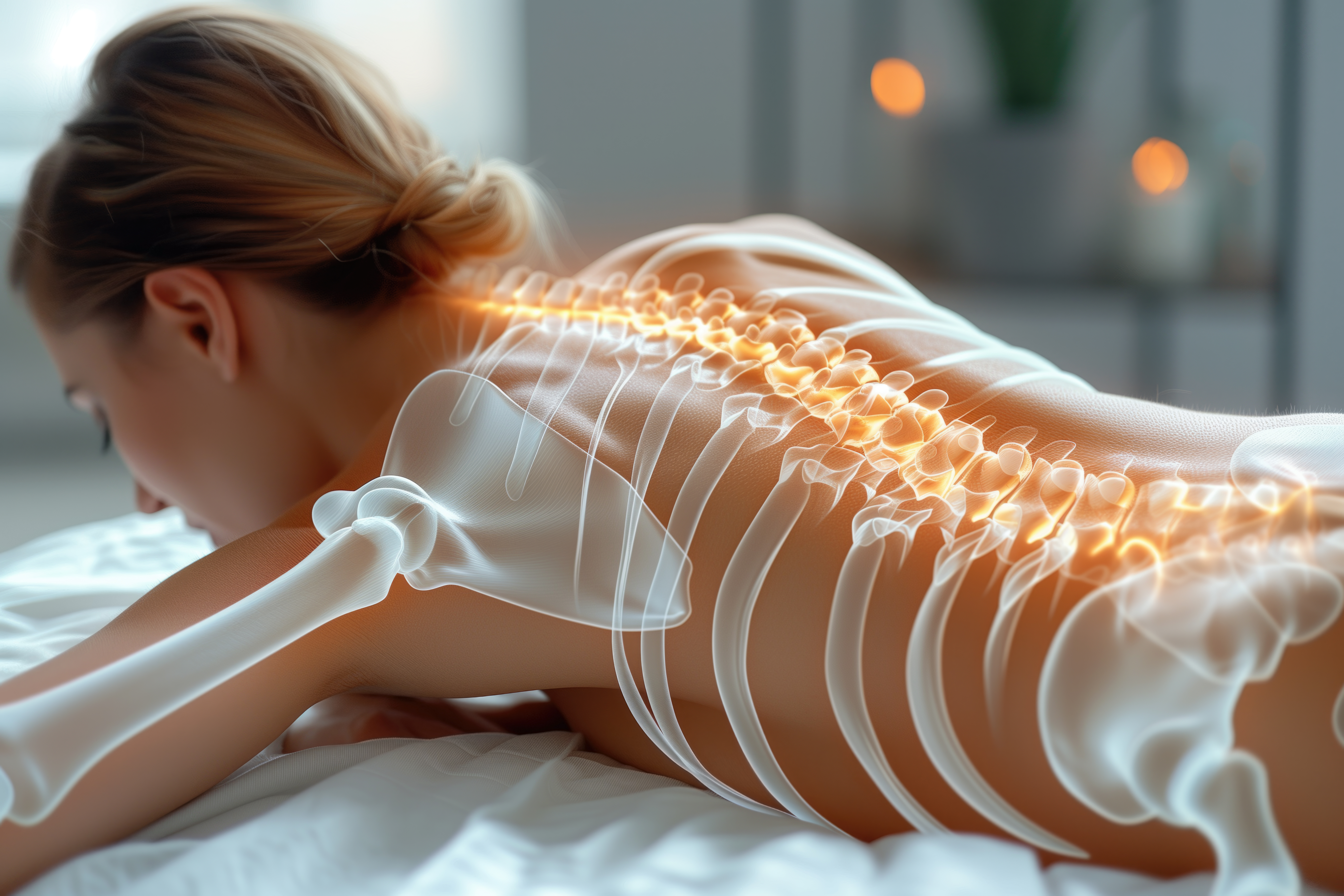Blog
Lifestyle Choices
Chiropractic care isn’t just a quick fix for back pain; it’s a lifestyle choice that promotes overall wellness and vitality. By actively engaging in chiropractic treatments, individuals embrace a proactive approach to their health, focusing on the body’s natural ability to heal and thrive.
At its core, this form of care centers around the alignment of the spine and nervous system. Through adjustments and manipulations, chiropractors seek to correct misalignments, known as subluxations, that may disrupt the body’s innate ability to function optimally. Restoring proper alignment enhances nervous system function, facilitating communication between the brain and the rest of the body.
Lifestyle choices mean prioritizing preventive care over reactive measures. Rather than waiting for symptoms to arise, individuals proactively seek adjustments to maintain spinal health and overall well-being. This proactive approach can help prevent injuries, alleviate pain, and enhance mobility, allowing individuals to live life to the fullest.
Regular chiropractic adjustments can have a profound impact on various aspects of health, including posture, immune function, and even mood. Proper spinal alignment promotes better posture, reducing strain on muscles and joints and decreasing the risk of chronic pain conditions. Additionally, chiropractic care has been shown to enhance immune function, helping the body defend against illness and disease more effectively. Moreover, by reducing tension and improving nervous system function, chiropractic adjustments can alleviate stress and promote a sense of well-being.
Incorporating chiropractic care into one’s lifestyle extends beyond occasional adjustments; it encompasses a holistic approach to health. Chiropractors often provide guidance on nutrition, exercise, and stress management to support overall wellness. By addressing lifestyle factors that may contribute to spinal misalignments and health issues, individuals can experience long-term benefits and improved quality of life.
Embracing chiropractic as a lifestyle choice empowers individuals to take an active role in their health journey. Rather than relying solely on medication or invasive procedures, individuals can harness the body’s innate healing abilities with natural, non-invasive chiropractic care. This approach not only treats symptoms but addresses the underlying cause of health issues, promoting long-term wellness and vitality.
Lifestyle choices, which include chiropractic care are suitable for individuals of all ages, from infants to seniors. By starting chiropractic care early in life, individuals can establish a foundation for lifelong health and wellness. Whether seeking relief from pain, enhancing athletic performance, or simply optimizing health, chiropractic care offers a holistic and proactive approach to well-being.
Choosing chiropractic as a lifestyle is a commitment to proactive health management and overall well-being. By prioritizing spinal health and embracing holistic care, individuals can experience the profound benefits of chiropractic on their journey to optimal health and vitality.
Click here to contact our Office or call (408) 263-8025
Anxiety
Dr. Lind offers a holistic approach to combating stress and anxiety, addressing both the physical and mental aspects of these conditions. Through adjustments and manipulations, chiropractors target the nervous system, spine, and musculoskeletal system, aiming to restore balance and alleviate tension that contributes to stress and anxiety.
One of the primary ways chiropractic care helps with stress and anxiety is by reducing muscle tension. Stress often manifests physically, causing muscles to tighten and contract, leading to discomfort and pain. Chiropractic adjustments release tension in the muscles, promoting relaxation and easing the physical symptoms of stress. By aligning the spine and releasing pressure on nerves, chiropractors can help the body achieve a state of balance, which can contribute to a reduction in overall stress levels.
Not only, but also, chiropractic adjustments can directly impact the nervous system, which plays a crucial role in regulating stress and anxiety responses. Misalignments in the spine, known as subluxations, can interfere with the proper functioning of the nervous system, exacerbating stress and anxiety symptoms. Through targeted adjustments, chiropractors can correct these misalignments, improving nervous system function and promoting a sense of calm and well-being.
In addition to physical techniques, chiropractors often incorporate other holistic approaches to stress and anxiety management into their treatments. This may include lifestyle recommendations such as exercise, nutrition, and relaxation techniques like breathing exercises or meditation. By addressing both the physical and lifestyle factors contributing to stress, chiropractic care offers a comprehensive approach to managing anxiety.
As a matter of fact, chiropractic care can have a positive impact on overall health and wellness, which can indirectly reduce stress and anxiety levels. When the body is functioning optimally, it is better equipped to handle the challenges and demands of daily life, reducing the likelihood of feeling overwhelmed or anxious. By promoting proper alignment, mobility, and overall health, chiropractic care supports the body’s ability to adapt to stressors and maintain a sense of balance.
It’s important to note that while chiropractic care can be beneficial for managing stress and anxiety, it is not a replacement for traditional mental health treatments such as therapy or medication. However, it can complement these approaches by addressing physical aspects of stress and anxiety and promoting overall well-being.
Chiropractic care offers a proactive and holistic approach to managing stress and anxiety. By addressing physical tension, improving nervous system function, and promoting overall health and wellness, chiropractors help individuals better cope with the challenges of daily life and experience a greater sense of calm and balance.
Click here to contact our Office or call (408) 263-8025
Seasonal Aches and Pains
Seasonal changes often bring about shifts in our activities, routines, and even physical health. From the chill of winter to the warmth of summer, our bodies adapt to these transitions, sometimes experiencing aches and pains along the way. Dr. Lind can play a crucial role in managing these seasonal discomforts, offering relief, and promoting overall wellness through targeted interventions and personalized care.
One of the primary ways a chiropractor helps manage seasonal aches and pains is by addressing misalignments in the spine, known as subluxations. These misalignments can occur due to various factors, including changes in activity levels, posture, and even environmental conditions. By using manual adjustments and spinal manipulation techniques, chiropractors can realign the vertebrae, reducing pressure on nerves and restoring proper function to the musculoskeletal system.
Moreover, a good chiropractor takes a holistic approach to care, considering the interconnectedness of the body systems and the underlying causes of discomfort. This means that they don’t just focus on alleviating symptoms but also strive to identify and address the root issues contributing to the pain. For instance, if seasonal changes lead to increased muscle tension or stiffness, a chiropractor may recommend complementary therapies such as massage, stretching exercises, or ergonomic adjustments to promote relaxation and flexibility.
Furthermore, chiropractors are trained to assess and treat a wide range of musculoskeletal conditions, including those exacerbated by seasonal factors. Whether it’s back pain from shoveling snow in the winter or joint stiffness from outdoor activities in the summer, a skilled chiropractor can develop customized treatment plans tailored to the individual needs and preferences of each patient. This personalized approach ensures that patients receive the most effective and appropriate care for their specific situation.
In addition to hands-on treatments, chiropractors often educate their patients on lifestyle modifications and self-care strategies to manage seasonal aches and pains more effectively. This may include advice on ergonomics, posture correction, exercise routines, nutritional support, and stress management techniques. By empowering patients with the knowledge and tools to take an active role in their health and well-being, chiropractors promote long-term relief and resilience against seasonal challenges.
A good chiropractor serves as a valuable ally in the battle against seasonal aches and pains, offering expert guidance, personalized treatments, and holistic care to address both the symptoms and underlying causes of discomfort. By restoring balance to the body and optimizing its natural healing abilities, chiropractors help patients navigate seasonal transitions with greater ease and comfort, enabling them to enjoy life to the fullest year-round.
Click here to contact our Office or call (408) 263-8025
Springtime Allergies
Springtime allergies can be a nuisance for many individuals, causing symptoms such as sneezing, congestion, itchy eyes, and headaches. While over-the-counter medications may provide temporary relief, chiropractic care offers a holistic approach to managing allergies and improving overall health and well-being during the spring season.
One of the primary benefits of chiropractic care for springtime allergies is its focus on enhancing the function of the immune system. The nervous system plays a crucial role in regulating the immune response, and spinal misalignments, or subluxations, can interfere with this communication network. Chiropractic adjustments help restore proper alignment and function to the spine, thereby optimizing nervous system function and supporting a robust immune response. By addressing underlying spinal issues, chiropractic care can help reduce the severity and frequency of allergy symptoms.
Furthermore, chiropractic adjustments can alleviate tension and pressure in the spine and surrounding muscles, which can contribute to improved respiratory function. Many allergy sufferers experience tightness in the chest and difficulty breathing due to inflamed airways. By releasing tension in the thoracic spine and improving spinal mobility, chiropractic care can help individuals breathe more freely and comfortably, reducing the discomfort associated with allergy-induced respiratory symptoms.
In addition to spinal adjustments, chiropractors may also incorporate other therapeutic modalities into their treatment plans to address springtime allergies. These may include soft tissue therapies, such as massage and myofascial release techniques, to reduce muscle tension and promote relaxation. By targeting areas of tension and inflammation, these therapies can provide relief from allergy symptoms and improve overall comfort and well-being.
Moreover, chiropractors often emphasize the importance of maintaining a healthy lifestyle to support optimal immune function and minimize the impact of allergies. This may involve providing nutritional guidance, recommending supplements to support immune health, and encouraging regular exercise and adequate rest. By addressing lifestyle factors that contribute to allergies, chiropractors empower patients to take proactive steps towards managing their symptoms and improving their overall quality of life.
Overall, chiropractic care offers a natural and effective approach to managing springtime allergies by addressing the underlying causes of symptoms and supporting the body’s innate healing abilities. By restoring proper spinal alignment, reducing tension and inflammation, and promoting overall wellness, chiropractors help patients experience relief from allergies and enjoy the beauty of the spring season to the fullest.
Click here to contact our Office or call (408) 263-8025
Chiro Care for Seniors
Chiro care offers numerous benefits for seniors, promoting overall well-being and improving quality of life. With advancing age, seniors often encounter various health issues, including joint pain, stiffness, reduced mobility, and chronic conditions like arthritis. Chiro care addresses these concerns through non-invasive, drug-free methods tailored to meet the specific needs of older adults. One significant advantage of chiropractic care for seniors is its focus on improving joint function and mobility. As people age, joints may become stiff due to wear and tear or conditions like osteoarthritis.
Chiropractic adjustments aim to restore proper alignment and movement of the spine and other joints, alleviating stiffness and enhancing range of motion. This increased mobility can enable seniors to perform daily activities with greater ease and independence, thereby enhancing their overall quality of life. Moreover, chiropractic care offers natural pain relief for seniors dealing with chronic conditions such as arthritis or back pain.
Rather than relying on medications that may pose risks of side effects or interactions with other drugs, chiropractic adjustments provide a drug-free alternative for managing pain. Through gentle manipulation techniques, chiropractors can reduce inflammation, release tension in muscles, and alleviate pressure on nerves, effectively diminishing pain and discomfort. Additionally, chiropractic care contributes to better posture and balance in seniors, which are crucial for preventing falls and related injuries.
As people age, maintaining proper posture becomes increasingly challenging, leading to a higher risk of falls. Chiropractors address postural imbalances and spinal misalignments through adjustments and corrective exercises, helping seniors improve their posture and stability. This proactive approach to fall prevention can significantly reduce the likelihood of accidents and injuries, promoting greater safety and confidence in older adults. Furthermore, chiro care supports overall health and wellness by optimizing nervous system function.
The spine houses the central nervous system, which controls every function of the body. When spinal misalignments occur, they can interfere with nerve signaling, leading to various health issues. Through chiropractic adjustments, these misalignments, known as subluxations, are corrected, allowing the nervous system to function optimally. This can enhance seniors’ immune function, digestion, and organ function, contributing to their overall health and vitality. Chiropractic care offers numerous benefits for seniors, addressing a wide range of health concerns commonly associated with aging. By improving joint mobility, alleviating pain, promoting better posture and balance, and optimizing nervous system function, chiropractic care enhances seniors’ overall well-being and quality of life.
Its non-invasive nature and focus on natural healing make it a safe and effective option for seniors looking to maintain their health and vitality as they age.
Click here to contact our Office or call (408) 263-8025
Working From Home and Spinal Health
In the wake of the global shift toward remote work, more individuals find themselves adapting to makeshift home offices. While the convenience of working from home offers many advantages, it also presents a unique set of challenges, particularly when it comes to maintaining spinal health. Prolonged hours spent hunched over laptops or slouched on couches can wreak havoc on the spine, leading to discomfort, stiffness, and even chronic pain. However, with the right strategies and proactive measures, you can take control of your spinal health and thrive in your remote work environment.
First and foremost, creating an ergonomic workspace is paramount. Pay attention to your posture by ensuring that your chair provides adequate support for your lower back and promotes proper spinal alignment. Position your monitor at eye level to reduce strain on your neck and avoid leaning forward excessively. Invest in a supportive keyboard and mouse to minimize strain on your wrists and arms. By setting up your workspace with ergonomics in mind, you can significantly reduce the risk of developing spinal issues.
In addition to optimizing your workspace, incorporating regular movement breaks throughout the day is essential for spinal health. Set a timer to remind yourself to stand up, stretch, and move around every hour. Simple stretches such as shoulder rolls, neck rotations, and gentle backbends can help alleviate tension and improve circulation. Consider integrating a standing desk or using a stability ball as an alternative seating option to engage your core muscles and prevent stiffness.
Furthermore, practicing good posture habits during work hours is key to preventing spinal strain. Sit up straight with your shoulders relaxed and your feet flat on the floor. Avoid crossing your legs or slouching forward, as this can place unnecessary pressure on your spine. Utilize lumbar support cushions or rolled-up towels to maintain the natural curve of your lower back and relieve pressure on the discs.
Beyond the physical aspect, prioritizing self-care practices such as regular exercise, proper nutrition, and adequate sleep can contribute to overall spinal health. Engage in activities that strengthen the muscles supporting your spine, such as yoga, Pilates, or strength training exercises. Fuel your body with nutrient-rich foods that promote bone density and muscle function, and aim for at least 7-9 hours of quality sleep each night to allow your body to repair and rejuvenate.
Finally, don’t underestimate the importance of regular chiropractic care in maintaining spinal health. Chiropractic adjustments can help realign the spine, alleviate tension, and improve mobility, ensuring that your spine stays in optimal condition despite the challenges of working from home.
Click here to contact us or call (408) 263-8025
Headaches
Chiropractic care is increasingly recognized as an effective approach for managing headaches, offering relief to individuals suffering from headaches. These include tension headaches, migraines, and cervicogenic headaches. By employing spinal manipulation and other manual techniques, chiropractors aim to alleviate headache symptoms and address underlying causes.
One of the primary ways chiropractic helps with headaches is through spinal adjustments. Chiropractors perform targeted adjustments to correct misalignments, particularly in the cervical spine. Misalignments, also known as subluxations, can impede proper nerve function and blood flow, contributing to headache development. Through precise manipulation, chiropractors restore spinal alignment, reducing tension and pressure on surrounding nerves and tissues. This realignment can alleviate headache frequency, severity, and duration.
Not only, but also, chiropractic care focuses on enhancing spinal mobility and flexibility. Stiffness and restricted movement in the spine can exacerbate headache symptoms, especially tension headaches. Chiropractors employ various techniques such as spinal mobilization and stretching exercises to improve range of motion and reduce muscle tension. By promoting spinal health and flexibility, chiropractic adjustments help prevent the recurrence of headaches and mitigate their impact on daily life.
In addition to spinal adjustments, chiropractors often incorporate soft tissue therapies into their treatment plans. Massage therapy, trigger point therapy, and myofascial release techniques are commonly used to relax tight muscles and alleviate trigger points that may contribute to headache development. These therapies promote circulation, reduce inflammation, and release muscle tension, providing immediate relief and long-term benefits for headache sufferers.
In fact, chiropractors offer lifestyle and ergonomic recommendations to address contributing factors to headaches. They educate patients on proper posture, ergonomics, and stress management techniques to minimize triggers and maintain spinal health. By identifying and addressing lifestyle factors that exacerbate headaches, chiropractors empower patients to take an active role in their health and well-being.
Research supports the effectiveness of chiropractic care for headache relief. Numerous studies have demonstrated the positive outcomes of chiropractic treatment in reducing headache frequency, intensity, and duration. Moreover, chiropractic care is often preferred by patients seeking drug-free alternatives or those who have not found adequate relief from conventional treatments.
Chiropractic care offers a holistic and non-invasive approach to managing headaches. Through spinal adjustments, soft tissue therapies, and lifestyle recommendations, chiropractors address underlying issues contributing to headache development and provide long-lasting relief. By restoring spinal health and promoting overall well-being, chiropractic care empowers individuals to live free from the burden of chronic headaches.
Click here to contact our Office or call (408) 263-8025
Spring Activities
As spring emerges, it brings about changes in weather, outdoor activities, and even shifts in our bodies. Visiting a chiropractor during this season can be particularly beneficial for various reasons, offering a proactive approach to health and wellness as individuals transition from winter hibernation to more active lifestyles.
Spring signifies a time of increased physical activity for many people. After months of indoor confinement during winter, individuals often engage in outdoor sports, gardening, hiking, and other recreational activities. These activities can place additional stress on the musculoskeletal system, leading to strains, sprains, and other injuries. Visiting a chiropractor in the spring allows individuals to address any underlying issues, such as muscle imbalances or spinal misalignments, before they escalate into more significant problems, thereby preventing injuries and ensuring optimal performance during outdoor endeavors.
Seasonal changes can exacerbate certain health conditions, particularly allergies and sinus congestion. For individuals prone to seasonal allergies, chiropractic adjustments can help alleviate symptoms by improving nerve function and enhancing immune system response. By focusing on spinal health and alignment, chiropractors can reduce stress on the nervous system, promoting better communication between the brain and immune system. This may result in reduced allergy symptoms and improved overall well-being during the spring months.
Moreover, spring often brings about changes in posture and movement patterns as people transition from sedentary winter habits to more active lifestyles. Poor posture, repetitive movements, and increased physical exertion can lead to spinal misalignments and muscle imbalances, causing discomfort and reducing mobility. Regular visits to a chiropractor during the spring can help correct these issues, ensuring proper spinal alignment and restoring optimal movement patterns. By addressing posture and movement early on, individuals can prevent chronic pain and improve their overall physical function as they engage in seasonal activities.
As a matter of fact, spring cleaning and outdoor maintenance tasks are common during this time of year. These activities often involve repetitive motions, heavy lifting, and prolonged periods of bending or stooping, which can strain the back and joints. Visiting a chiropractor before engaging in spring cleaning activities can help prepare the body for these tasks by ensuring proper alignment and mobility. Chiropractors can also provide guidance on ergonomic principles and proper body mechanics to minimize the risk of injury while performing household chores or outdoor maintenance.
Visiting a chiropractor in the spring offers numerous benefits for maintaining overall health and well-being as individuals transition to more active lifestyles and engage in seasonal activities. From preventing injuries associated with increased physical activity to alleviating allergy symptoms and promoting better posture, chiropractic care can help individuals optimize their health and enjoy the spring season to the fullest.
Click here to contact our Office or call (408) 263-8025
The Immune System
Chiropractic treatment is increasingly recognized for its potential to boost the immune system. We offer a holistic approach that extends beyond mere pain relief. Focusing on spinal health and the nervous system, aiming to optimize the body’s natural healing abilities, leading to a stronger immune response.
One of the primary ways chiropractic treatment supports immune function is by ensuring proper alignment of the spine. The spine houses the spinal cord, which serves as the main pathway for communication between the brain and body. When the spine is misaligned, it can interfere with communication, leading to dysfunction in various systems, including the immune system. Chiropractors use spinal adjustments to realign the vertebrae, relieving pressure on the nerves and restoring optimal nervous system function.
Furthermore, research suggests that chiropractic adjustments can positively impact the autonomic nervous system, which plays a role in regulating immune function. By enhancing autonomic function through spinal manipulation, chiropractic helps to balance the sympathetic and parasympathetic branches of the nervous system. Thereby promoting overall wellness and resilience against illness.
Another way chiropractic treatment aids the immune system is by reducing stress levels. Chronic stress has been shown to weaken immune function, making individuals more susceptible to infections and illness. Stress can also contribute to muscle tension and spinal misalignments. Through gentle adjustments and soft tissue therapies, chiropractors help to alleviate tension and promote relaxation, thereby reducing the detrimental effects of stress on the body’s immune defenses.
Additionally, chiropractic care emphasizes a healthy lifestyle, including proper nutrition, regular exercise, and adequate sleep – all of which are essential for a robust immune system. Chiropractors often provide guidance on dietary choices and lifestyle modifications to support overall health and well-being. By addressing underlying issues such as poor posture, nutritional deficiencies, or sedentary habits, chiropractic treatment fosters an environment conducive to optimal immune function.
Chiropractic adjustments have been shown to stimulate the release of endorphins, the body’s natural painkillers, and neurotransmitters that promote feelings of well-being. This neurochemical response not only helps to alleviate pain but also boosts mood and enhances immune function. By addressing both physical discomfort and emotional stress, chiropractic care promotes a state of balance and harmony within the body, allowing the immune system to function at its best.
In other words, chiropractic treatment offers a multifaceted approach to enhancing immune function. Focusing on spinal health, nervous system function, stress reduction, and overall wellness. By addressing the underlying causes of dysfunction and promoting natural healing mechanisms, chiropractors empower individuals to strengthen their immune defenses.
Click here to contact our Office or call (408) 263-8025
Nutrition
Nutrition plays a pivotal role in maintaining optimal health and well-being, influencing various bodily functions and processes. Proper nutrition provides essential nutrients that support growth, repair tissues, boost immunity, and sustain overall vitality. However, many individuals struggle to achieve balanced nutrition due to busy lifestyles, dietary preferences, or misinformation. This is where chiropractic practitioners can significantly assist their patients in achieving better health outcomes through education, guidance, and personalized nutritional recommendations.
Chiropractic practitioners are well-positioned to address nutritional concerns as they typically have a holistic approach to healthcare, focusing on the body’s innate ability to heal itself when provided with the right conditions. They understand the intricate connections between the spine, nervous system, and overall health, recognizing that nutrition plays a fundamental role in maintaining spinal health and overall well-being.
One of the primary ways chiropractors can help is by educating patients about the importance of nutrition in supporting musculoskeletal health. Nutrient-rich foods such as fruits, vegetables, lean proteins, and healthy fats provide the building blocks necessary for strong bones, muscles, and connective tissues. By emphasizing the role of nutrition in preventing conditions like osteoporosis, arthritis, and muscle weakness, chiropractors empower patients to take proactive steps toward better health.
We can also assess patients’ dietary habits and provide personalized nutritional recommendations tailored to their specific needs and goals. Through detailed consultations and assessments, chiropractors can identify nutritional deficiencies, imbalances, or dietary patterns that may be contributing to musculoskeletal issues or other health problems. They can then develop individualized nutrition plans that focus on optimizing nutrient intake, improving dietary quality, and promoting overall wellness.
In addition to dietary recommendations, chiropractors may also incorporate nutritional supplements into their treatment plans to address specific health concerns or deficiencies. Supplements such as vitamins, minerals, and herbal extracts can complement a healthy diet and support the body’s natural healing processes. Chiropractors can guide patients in selecting high-quality supplements and advise them on proper dosages and usage to maximize effectiveness and safety.
Furthermore, chiropractic can enhance the body’s ability to absorb nutrients by optimizing spinal alignment and nervous system function. Misalignments in the spine, known as subluxations, can impede proper nerve signaling and disrupt the body’s ability to absorb and utilize nutrients efficiently. Through spinal adjustments and other chiropractic techniques, practitioners can restore proper alignment, alleviate nerve interference, and promote optimal nutrient absorption and utilization.
By integrating nutrition into their holistic approach to healthcare, chiropractors can empower patients to make informed choices that support their overall health and well-being. Through education, personalized guidance, and hands-on care, chiropractors play a vital role in helping individuals achieve and maintain optimal nutrition and vitality for a healthier life.
Click here to contact our Office or call (408) 263-8025









